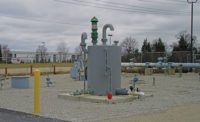...industrial work next year, while McGraw-Hill Construction predicts a 14% increase. "But the market is coming from such low levels that percent changes can play tricks on you," says Sullivan.
All the conditions are there for the manufacturing market to turn around: capacity utilization is up over 80%, corporate profits are up and employment in that sector is also up, according to Sullivan. "When all these criteria are present, the industrial market does not sneak up with a 3% increase, but tends to pop," he adds.
The return of many state budgets to a surplus situation after years of financial crisis also is fueling optimism about next years public markets. While the federal budget deficit is a concern for federal spending, economists believe states will be in a better position to finance projects. Many states postponed projects during their financial difficulties and there is a pent-up demand at the state level, says Sullivan (see story, p. 10).
"There is no question that the difficult financial situation of the states had a dampening effect on certain markets such as education," says Robert A. Murray, vice president of economic affairs for McGraw-Hill Construction. "The worst of that dampening has taken place."
Budget Bottlenecks
|
Although the federal governments 2005 fiscal year began Oct. 1, infrastructure spending levels are far from certain.
When Congress returns Nov. 16 for a lame-duck session, the nine unfinished appropriations bills will be a prime focus for legislators. Agencies funded by the nine measures have operated since October generally at 2004 spending levels under a continuing resolution. Among agencies in that holding pattern were the U.S. Dept. of Transportation, Corps of Engineers and Environmental Protection Agency.
A package combining the pending bills is possible, but differences over bills for the Corps and EPA may be too large to resolve in the short session, says David Schwietert, Associated General Contractors government affairs director for federal markets and procurement. That could mean another stopgap to carry those programs into early 2005.
Many in construction are watching the unfinished transportation-treasury spending bill. If it is folded into a multi-bill package, Schwietert thinks it will include the 2005 funding levels the Senate recommended. Construction would like that, because the Senate called for a $34.9-billion highway obligation ceiling, up $1.3 billion from 2004, and $7.8 billion for the Federal Transit Administration, up 7%.
The four appropriations bills that Congress did complete by mid-October had moderately good news for construction. The military construction measure boosts 2005 spending 7%, to $10 billion. The homeland security bill earmarks $295 million for airports to install explosives-detection gear. It also has $150 million for port security grants and the same for the railroad and transit sector.


Post a comment to this article
Report Abusive Comment